Play Pot restaurant by Lim Tae Hee Design Studio
Sheets of tarpaulin roll up to reveal shelves for pots and condiments at a Seoul restaurant inspired by street food stalls by Lim Tae Hee Design Studio (+ slideshow).
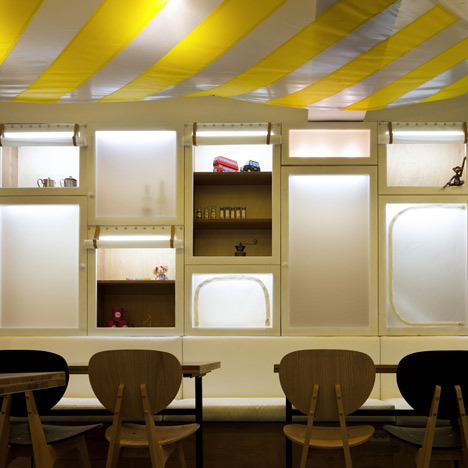
Play Pot is a 'boonsik' restaurant offering the kind of small Korean snacks that are usually sold on the streets.
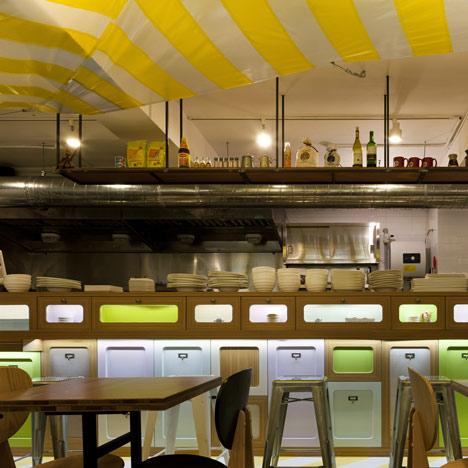
The tarpaulin on the walls mimics the tented coverings of temporary food stalls, with some sheets rolled up and tied while others are zipped shut.
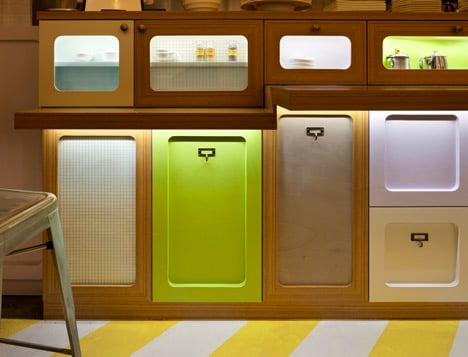
Yellow and white material pinned to the ceiling also references the striped fabric of these tented canopies, while more stripes appear on the restaurant's facade.
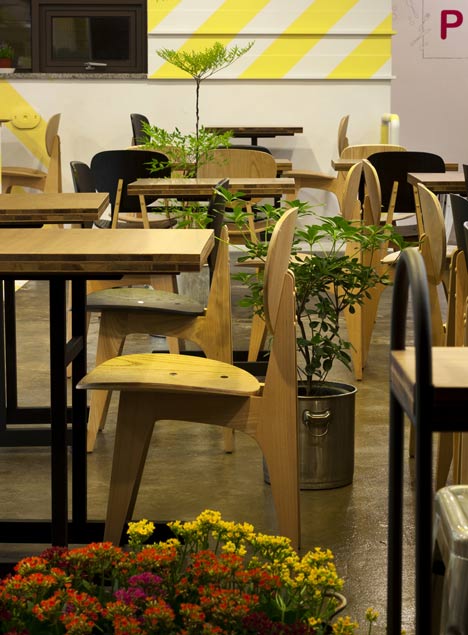
Cupboards painted in shades of purple and green form the base of the kitchen counter and potted flowers are dotted around between the wooden tables and chairs.
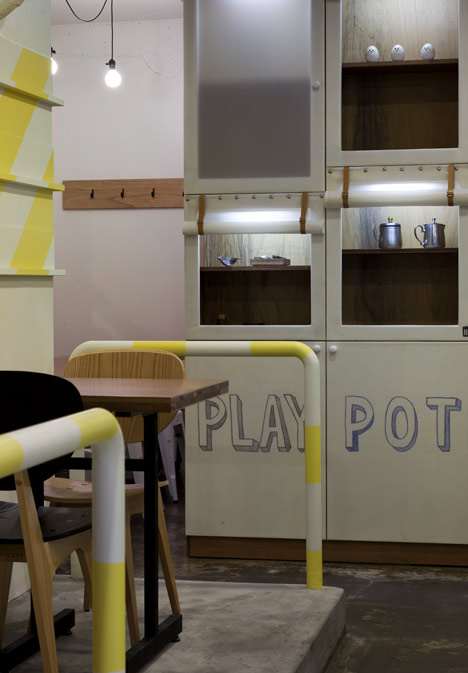
See all our stories from South Korea »
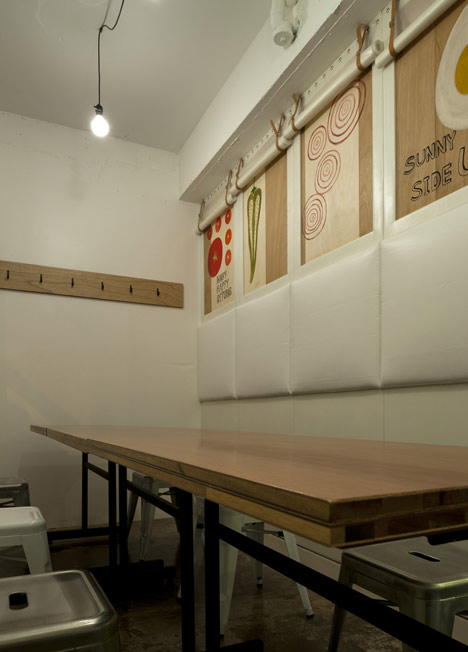
See all our stories about restaurants »
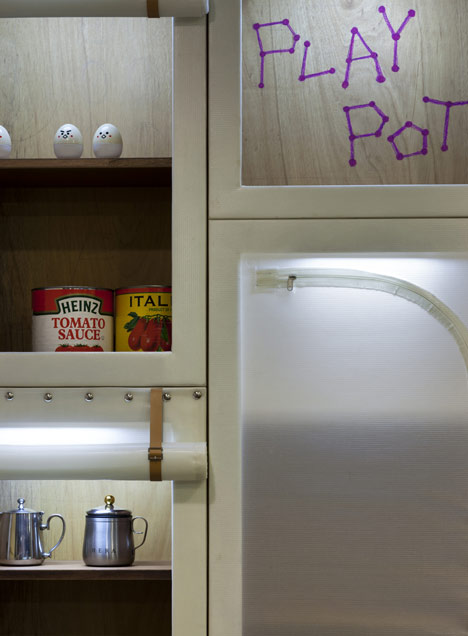
Photographs are by Park Youngchae.
Here's some more information from Lim Tae Hee Design Studio:
Play Pot is a Boonsik restaurant. Boonsik is a term used to refer to inexpensive Korean snacks easily found on Pojangmacha. (food vendor). The main idea behind Play Pot is 'super luxury food vendor': taking the favorites of what you love from the street and giving them a gourmet twist, while still keeping the accessibilty, inexpensive prices and customer service like a regular food chain.
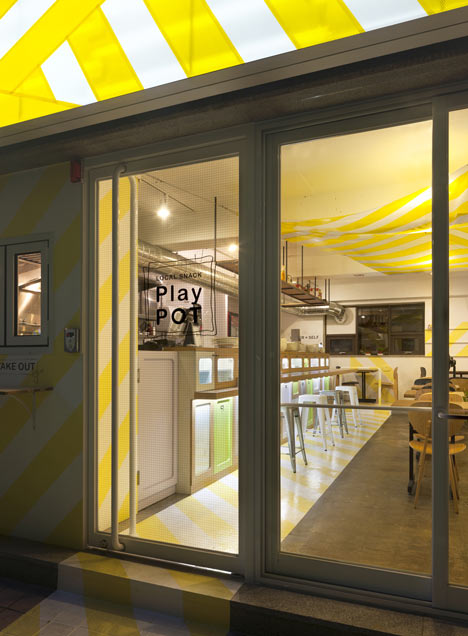
By looking at the place, Play Pot brings the outside space into the interior space of the restaurant, creating a space within the space. The design took inspiration from pojangmacha (food vendors) which, although usually located in the middle of the street, are inviting spaces.
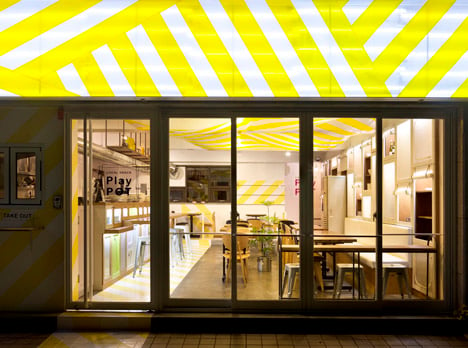
Play Pot’s sensibility was designed so that the interior space looks like exterior, breaking down the invisible barrier between exterior and interior space. The use of metaphorical road signs was an attempt to hint at this.
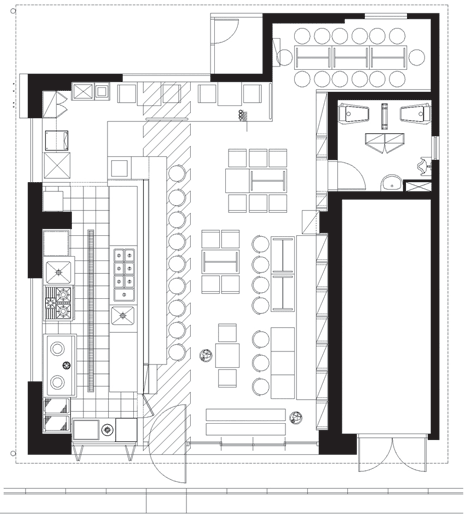
Plan – click above for larger image
From studying pojangmacha, the material and tarpaulin played a significant role. Tarpaulin is a heavy duty water proof cloth usually made with plastic. It is commonly used in normal food vendors in Korea. The material in itself has the quality of opacity that allows light to come through. This creates more interesting atmosphere than that of daytime, creating twilight or warm night time.
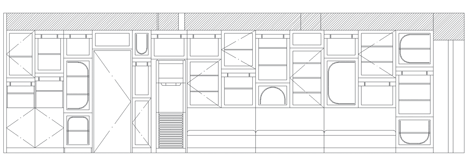
Tarpaulin wall – click above for larger image
Pojangmacha has its own merits and own culture. Zippers are used to make windows out of tarpaulin tents, or the rims were rolled up to make an entrance. Play Pot was a project that stimulates nostalgia, familiarity and recreates its own culture.
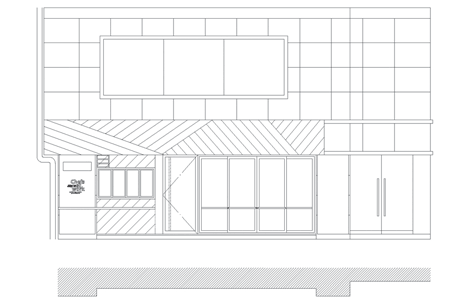
Facade – click above for larger image
Location: Bangbae dong, Seocho-gu, Seoul, Korea
Area: 77.62 sq.m.
Function and purpose : Boonsik restaurant
Materials: Exposed concrete, paint finish, plywood, tarpaulin
Design time: April - June 2012
Date of completion: June 2012
Designer: Lim, Taehee
Design team: Lim Tae Hee design studio
Construction company: Jo, Woogon
Collaboration Artist: U.JA design lab